The whispers of history cling to each coil, each wave, each strand of textured hair. It is a living archive, a scroll unrolled through generations, bearing not just biological truths but profound cultural meanings. For those whose lineage traces back to Africa and its global diaspora, hair is never merely an aesthetic choice; it is a profound declaration, a quiet act of remembrance, a visible connection to a heritage shaped by both resilience and radical beauty. Our journey into the cultural meanings found in textured hair styles is a deep inquiry into this powerful legacy.
It is an exploration that acknowledges the strand’s elemental biology , echoes ancient practices, celebrates living traditions of care and community, and affirms hair’s role in voicing identity and shaping futures. This exploration is not about superficial trends; it is a meditation on the very soul of a strand , a testament to its enduring significance as a conduit of ancestral wisdom and cultural narrative.

Roots
Consider, if you will, the singular sensation of sunlight filtering through the delicate yet robust architecture of a tightly coiled strand. Each helix, a marvel of natural design, holds within its very structure a narrative that stretches back across millennia, across continents. This fundamental understanding of textured hair is not solely a modern scientific pursuit; it is a reaffirmation of ancestral knowledge , a recognition that the physical characteristics of our hair carry the echoes of our beginnings.
From the earliest days, communities understood the unique properties of their hair, discerning its needs and devising care regimens long before laboratories or formal classifications existed. This innate wisdom, born from observation and sustained by communal practice, forms the bedrock of our present-day appreciation for textured hair.

Hair’s Ancestral Blueprint
The science of textured hair, with its elliptical follicle, varied curl patterns, and distinctive moisture dynamics, is in many ways a biological testament to adaptation. These physical traits, so often misunderstood or pathologized in dominant beauty cultures, represent a genetic legacy that has served communities in diverse climates and environments. The very shape of the follicle, which dictates the curl’s tightness, influences how natural oils distribute along the hair shaft, necessitating particular approaches to moisture retention. This biological reality, once decoded through observation, became the basis for traditional care rituals focused on deep nourishment and protective styling.
Textured hair, with its unique follicular structure, carries a biological signature that has shaped cultural practices for millennia.
For instance, the propensity of coiled and curled hair to draw moisture from the air, and its tendency to dry out without proper hydration, steered ancient communities toward botanical remedies and rich emollients. The structural integrity of the strand, though often perceived as fragile, possesses a remarkable elasticity and strength when properly nurtured. This inherent quality, coupled with a deep understanding of environmental factors, led to the development of complex styling techniques designed to shield the hair from sun, dust, and breakage, preserving its vitality and length over time.

The Language of Coil and Curl
While modern cosmetology has introduced systems of hair classification, often numerical (like the 3A, 4C typology), the cultural origins of recognizing hair patterns predate these constructs. In many ancestral African societies, the variations in hair texture and style were not merely visual differences; they constituted a nuanced language. A person’s curl pattern might hint at their geographic origin within a broad continent, connecting them to specific tribal groups or regional aesthetics.
This was a form of identity legible to those who understood its grammar, conveying belonging without a spoken word. The very act of recognizing and naming these distinct textures—even in descriptive, rather than numerical, terms—was an act of cultural meaning-making, imbuing each strand with a sense of place and lineage.

Ancient Lexicon of Strands
The lexicon used to describe textured hair in its earliest contexts was rooted in the living experience, reflecting a direct relationship with the hair itself and its role in daily life. Consider terms that might describe the density of a forest canopy for thick, voluminous hair, or the spiraling path of a climbing vine for a defined coil. Such language speaks to a deep connection to nature and a reverence for the hair’s organic form.
This ancestral vocabulary, often lost or diluted in the diaspora, holds within it an understanding of hair not as something to be tamed, but as something to be honored. The specific nomenclature of hair types or styles from various African diasporic cultures speaks to a rich, often unwritten, history.
- Irun Kiko ❉ A Yoruba term from Nigeria, referring to African hair threading, a technique practiced as early as the 15th century, signifying the deep cultural regard for hair as integral to the head and good fortune (Rovang, 2024).
- Tignon ❉ A head covering mandated by law in 18th-century New Orleans for free women of color, yet transformed into a symbol of defiance and beauty, reflecting a complex history of both oppression and resistance (Byrd and Tharps, 2001).
- Afro Comb ❉ In Kemet and West African cultures, this tool was not only practical for hair maintenance but also served as a status symbol and decoration, carved from wood and bone (Munu, 2021).
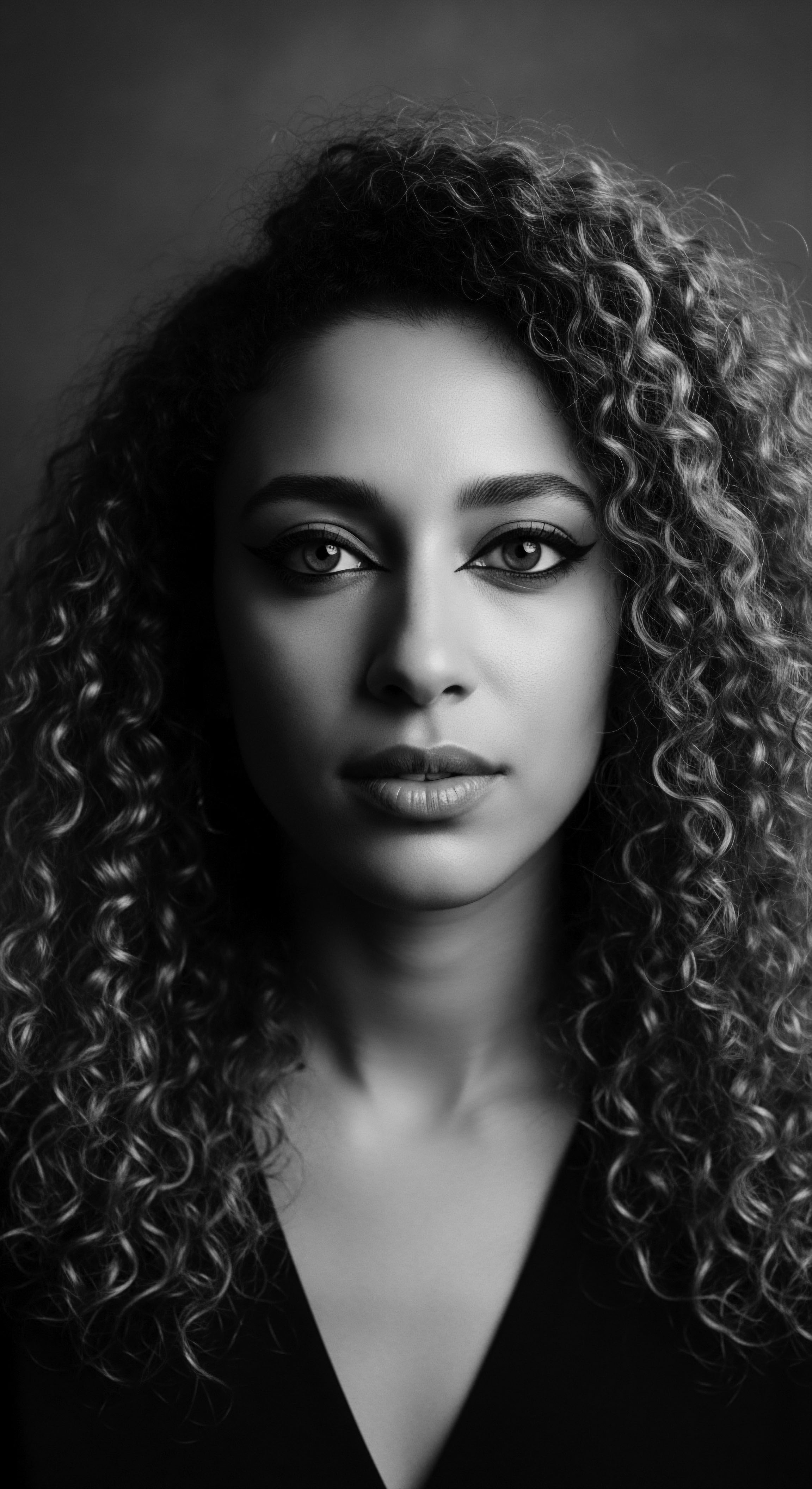
Cycles of Growth and Ancestral Nourishment
The understanding of hair growth cycles in ancestral societies was inherently holistic, recognizing that hair vitality stemmed from internal well-being and external care. Traditional approaches to nourishment often intertwined with agricultural cycles, medicinal plant knowledge, and dietary practices. Hair care was never isolated from the body’s overall health. Indigenous communities carefully observed how local flora and fauna could contribute to hair strength, shine, and manageability.
These practices involved applying natural butters, herbs, and powders to retain moisture, protecting hair with scarves for ceremonies or daily protection (Byrd and Tharps, 2001; Omotos, 2018). This symbiotic relationship between human care, natural resources, and the hair’s biological rhythms allowed for the cultivation of robust, healthy strands, truly reflecting a connection to the earth and a harmonious way of life.
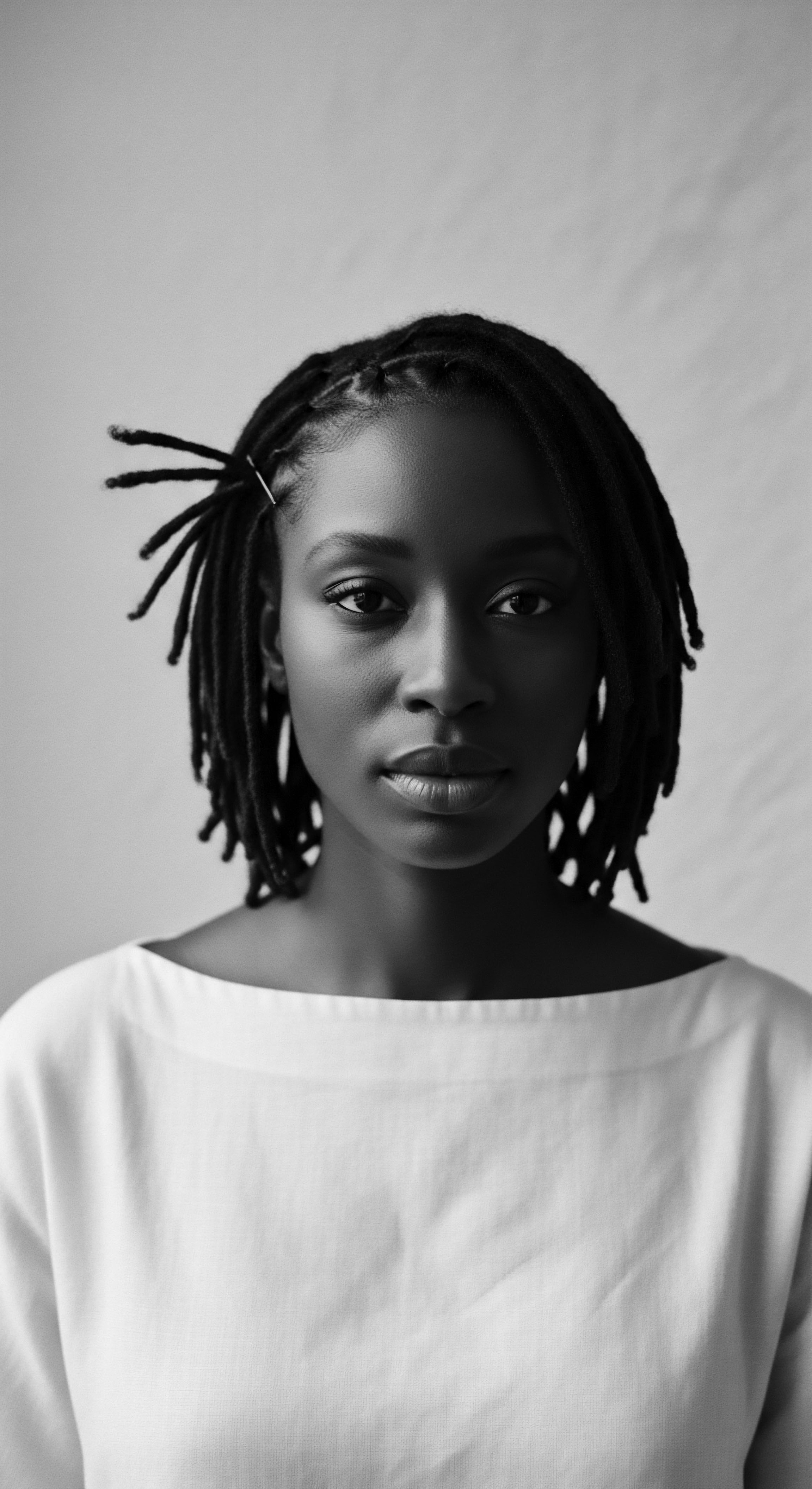
Ritual
The gestures of hands moving through textured hair, whether twisting, braiding, or coiling, carry the weight of generations. These are not merely styling techniques; they are living rituals , practices steeped in communal memory and historical significance. From the earliest communal gatherings for hair grooming in ancient African villages to the intimate bonding moments in diaspora homes today, the act of styling textured hair transcends the superficial. It is an art, a science, and a profound form of communication that has shaped identities and asserted cultural continuity through time.

Sculpting Identity ❉ Heritage Braiding Forms
Braids, in particular, stand as a testament to the enduring artistry and cultural depth of textured hair styles. Their origins in Africa stretch back thousands of years, with archaeological evidence, such as rock paintings in the Sahara desert, dating cornrows to 3500 BCE (Odele Beauty, 2024). Beyond aesthetics, these intricate patterns communicated a wealth of social information within various African tribes ❉ age, marital status, religion, wealth, rank, and even tribal affiliation (Expedition Subsahara, 2024).
The very patterns could signify a person’s surname in some clans (Byrd and Tharps, 2001). For example, the Fulani people of West Africa are recognized for their distinctive cornrows, adorned with specific beadwork, while the Himba Tribe in Southwest Africa traditionally wear thick braids coated with clay (Khumbula, 2024).
Braids serve as a visual lexicon, articulating social status, age, and tribal identity across centuries of textured hair heritage.
The forced passage of Africans to the Americas did not extinguish this tradition. Instead, braiding became a profound act of cultural resistance . Enslaved women, stripped of almost everything, used braids to preserve a connection to their heritage and as a covert means of communication. Cornrows, with their deep cultural roots, served as secret maps for escape routes on the Underground Railroad, and could even hide seeds or small tools for survival in unfamiliar lands (Odele Beauty, 2024; BLAM UK CIC, 2022).
This historical example underscores the powerful dual nature of textured hair styles ❉ both a vibrant expression of identity and a resilient tool for survival against oppressive forces. The skill involved in creating these complex patterns, often taking hours, solidified communal bonds as women gathered, sharing stories and transmitting knowledge across generations (Expedition Subsahara, 2024).

Beyond Adornment ❉ Protective Styles through Time
The concept of protective styling is far from a modern invention; it is an ancestral practice rooted in the practical wisdom of safeguarding textured hair. Long before chemical treatments or intense heat styling, communities understood the benefits of minimizing manipulation and shielding hair from environmental aggressors. Braids, twists, and various forms of updos were not only beautiful but also preserved the hair’s length and health. This wisdom has carried forward, demonstrating how ancient techniques remain pertinent today for maintaining vitality in textured hair.
The evolution of protective styles reflects a continuum of adaptation, from necessary practices in demanding labor environments during slavery to contemporary expressions of style that prioritize hair health. Wigs and hair extensions also possess a deep lineage, used historically for ceremonial purposes, signifying status, or simply offering stylistic versatility. This aspect of hair manipulation, often seen as a contemporary trend, truly carries a long-standing cultural tradition of adornment and transformation.
| Historical Styling Practice Communal Braiding Sessions |
| Cultural Significance or Purpose Social bonding, storytelling, transmission of ancestral knowledge on hair care and community values. |
| Modern Echoes in Textured Hair Salon visits and home braiding gatherings continue to serve as spaces for connection and shared cultural experience. |
| Historical Styling Practice Head Wraps (Tignon Laws) |
| Cultural Significance or Purpose Initially forced concealment as a mark of inferiority; transformed into a symbol of defiance, beauty, and cultural assertion . |
| Modern Echoes in Textured Hair Head wraps remain a versatile accessory for style, protection, and a conscious assertion of heritage and identity. |
| Historical Styling Practice Use of Natural Oils and Butters |
| Cultural Significance or Purpose Nourishment, protection from elements, connection to land and medicinal plants for holistic health. |
| Modern Echoes in Textured Hair Emphasis on natural ingredients like shea butter and coconut oil for moisture and scalp health, reflecting traditional wisdom . |
| Historical Styling Practice These practices underscore the continuous dialogue between historical necessity, cultural meaning, and contemporary hair expression. |
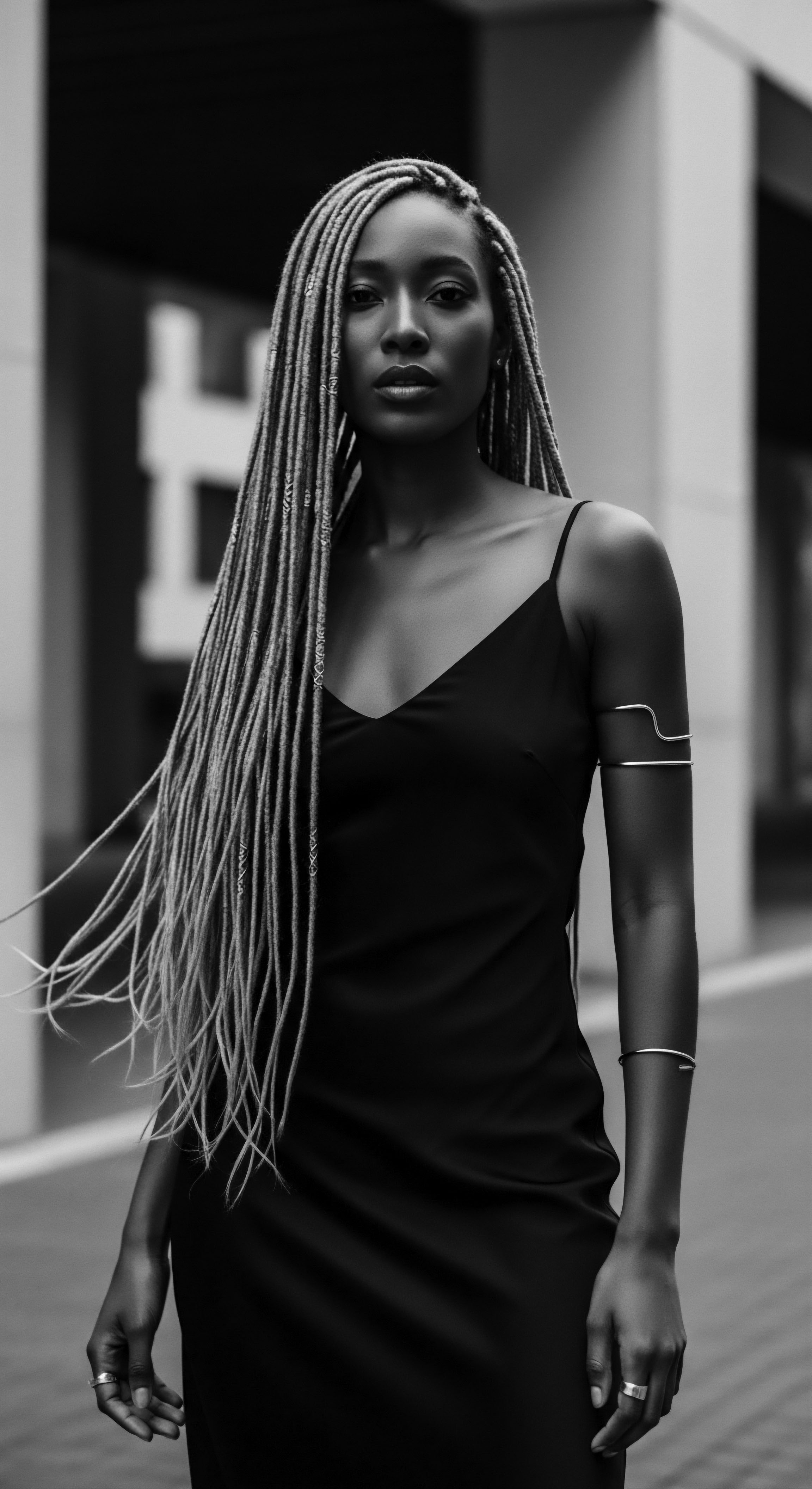
Tools of Tradition and Transformation
The implements used to care for and style textured hair also carry historical resonance. From early combs carved from wood or bone, like the Afro comb used in Kemet and West African cultures as a status symbol (Munu, 2021), to the earliest hairpins and adornments, these tools were designed with an innate understanding of textured hair’s unique qualities. Their evolution mirrors changes in societal norms and technological advancements, yet the fundamental purpose of detangling, shaping, and adorning remains constant. The ingenuity of these tools, crafted from available natural resources, speaks to the resourcefulness of ancestral communities.
Even the historical use of a heated fork as a makeshift hot comb during the post-slavery era highlights the resilience and determination to manipulate hair in a society that valued straight hair (Library of Congress, 2024). This aspect of hair care, far from being simply utilitarian, is steeped in a history of innovation born of necessity and cultural pride.

The Crown’s Chronicle ❉ Adornment and Assertion
The adornment of textured hair, throughout history, has been a rich chronicle of identity and assertion. Beads, cowrie shells, and gold thread woven into braids were not mere decorations; they were markers of social status, marital availability, spiritual beliefs, and even a form of currency (Khumbula, 2024; Odele Beauty, 2024). In some ancient African societies, the intricacy and embellishment of a hairstyle directly correlated with a person’s importance or wealth (Genesis Career College, 2024; Khumbula, 2024). This practice continued through the transatlantic slave trade and into the diaspora, where adornments became quiet acts of defiance and ways to maintain cultural connections despite forced dehumanization.
The story of the Tignon Laws in 18th-century New Orleans serves as a potent example. Spanish colonial governor Don Esteban Miró, perturbed by the elaborate and attractive hairstyles of free Creole women of color which rivaled those of white women, mandated they wear a “tignon” or headscarf to cover their hair (Byrd and Tharps, 2001; New York Historical, 2024; Reframe52, 2024). Yet, these women, with profound creativity , transformed the mandated head covering into a vibrant fashion statement, using colorful, expensive fabrics, ornate knots, feathers, and jewels, turning a symbol of oppression into one of undeniable beauty, wealth, and continued resistance (New York Historical, 2024; Reframe52, 2024). This powerful historical example demonstrates how hair adornment became a means to assert identity and subvert attempts at control, a testament to the unbreakable spirit of a people and the enduring cultural meaning embedded in their hair.
(Byrd and Tharps, 2001, p. 14).

Relay
The care of textured hair moves beyond simple hygiene; it is a sacred dialogue with our heritage , a practice that bridges ancient wisdom with contemporary understanding. This daily and weekly tending to strands represents a continuous relay of ancestral knowledge, problem-solving, and a profound commitment to holistic wellness. It is within these routines that the deeper meanings of textured hair come into full focus, revealing a tapestry of self-reverence and historical consciousness.
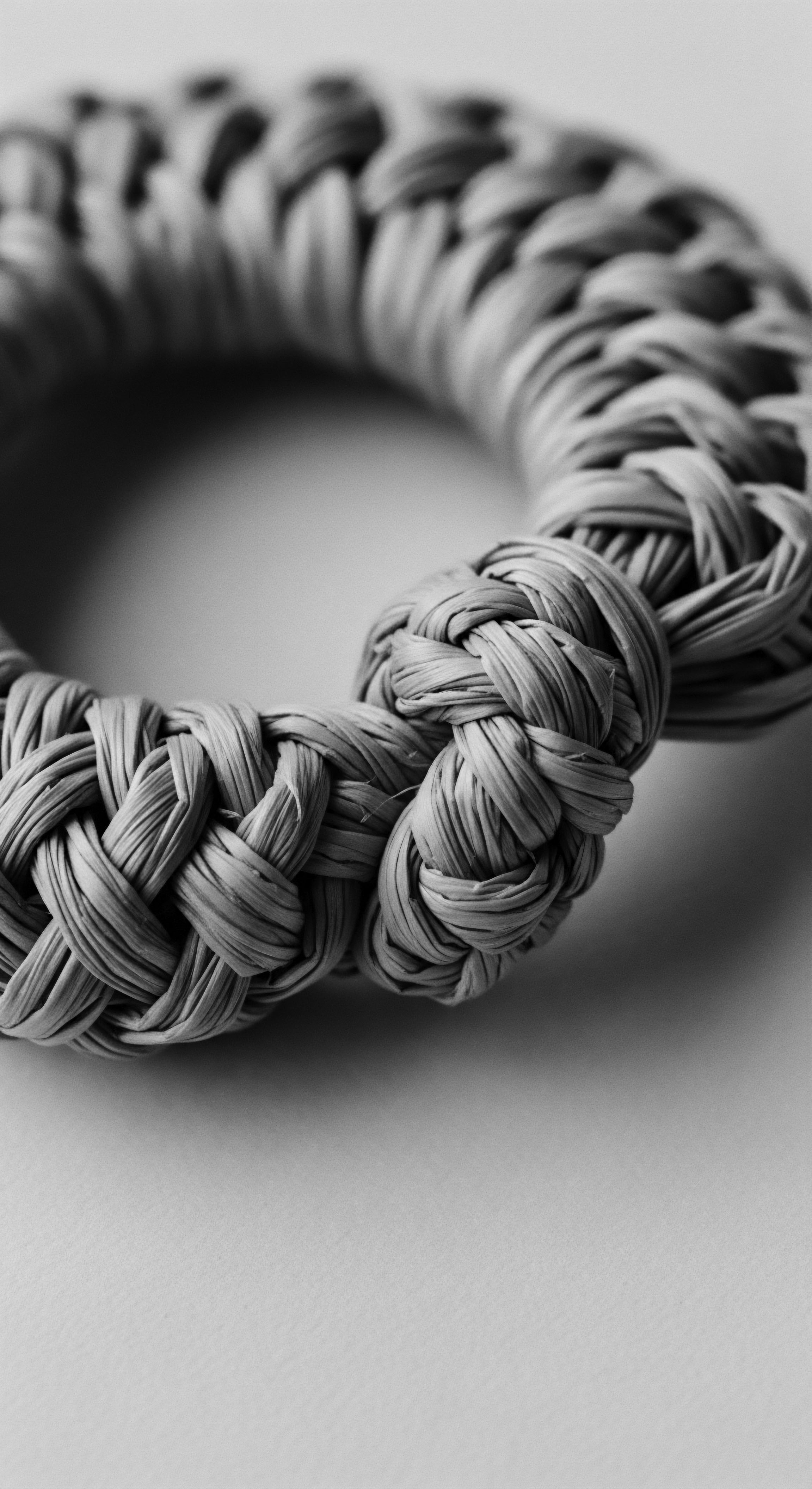
The Rites of Replenishment ❉ Ancestral Elixirs and Practices
Long before the advent of commercial hair products, ancestral communities developed sophisticated systems of hair care using natural ingredients sourced from their immediate environments. These regimens were not haphazard; they were informed by generations of observation and passed down through oral tradition. The selection of specific plant extracts, oils, and butters reflected an intricate knowledge of their medicinal and nourishing properties. For instance, shea butter, derived from the karite tree, has been used for millennia across West Africa for its moisturizing and protective qualities, not only for skin but as a base for hair treatments, acting as a sealant and offering UV protection (Rovang, 2024).
Coconut oil, aloe vera, and various herbal infusions also featured prominently in these historical practices, chosen for their ability to hydrate, strengthen, and promote scalp health (Expedition Subsahara, 2024; Khumbula, 2024). These traditional ingredients were understood not just as topical applications, but as part of a larger wellness philosophy where health was interconnected with natural surroundings.
The application methods themselves were often communal rituals. Wash day, even today, carries echoes of these ancient gatherings, where hands would meticulously work cleansers and conditioners through hair, detangling and preparing it for styling. This collective care reinforced social bonds and ensured the transmission of techniques and knowledge from elders to younger generations (Khumbula, 2024; ELLE, 2020). The philosophy embedded in these practices was one of prevention and preservation, recognizing the innate qualities of textured hair and working in harmony with its unique needs rather than attempting to alter its natural form.
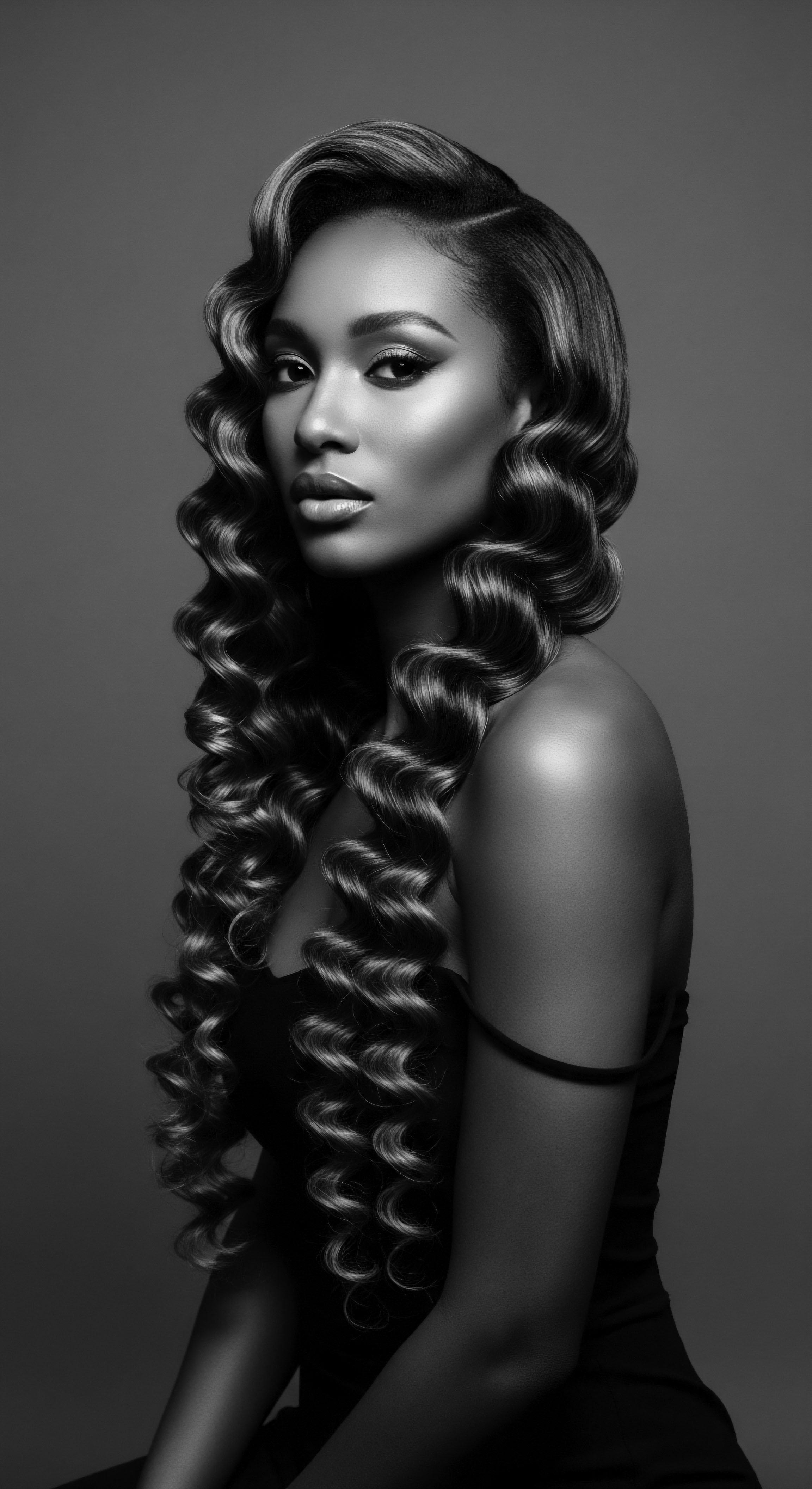
Guardians of the Night ❉ The Bonnet’s Legacy
The practice of covering hair at night, often with bonnets, scarves, or wraps, holds a rich and complex history, particularly within Black and mixed-race communities. While today it serves a practical purpose of moisture retention and friction reduction, its roots delve into a past where head coverings were intertwined with dignity, social signaling, and even forced concealment. In various African cultures, head wraps were worn not only for protection from the elements but also to signify tribal affiliation, marital status, or social standing (ELLE, 2020).
During the transatlantic slave trade, head coverings became a cruel tool of dehumanization, used by slave traders to strip individuals of their cultural identity by shaving heads and then covering them (BLAM UK CIC, 2022; Library of Congress, 2024). Later, during the 18th century, laws like the Tignon Laws in New Orleans, as previously discussed, mandated head coverings for free women of color, aiming to denote a subordinate social status (Byrd and Tharps, 2001; New York Historical, 2024).
Yet, in an astounding act of resilience , these mandated coverings were transformed. Black women adorned them with vibrant colors and elaborate ties, turning symbols of oppression into expressions of beauty and defiance (New York Historical, 2024; Reframe52, 2024). The bonnet of today carries this dual legacy ❉ a practical item ensuring hair health and a symbolic garment echoing a history of self-preservation and unapologetic self-expression. It is a quiet, nightly ritual that connects the wearer to a lineage of individuals who understood the value of their hair, even when others sought to diminish it.

Whispers of Wellness ❉ Hair as a Holistic Barometer
How did ancestral communities understand the relationship between hair health and overall well-being? In many traditional African philosophies, the hair was viewed as an extension of the self, a literal and spiritual antenna connecting an individual to the divine and to their lineage. Healthy, vibrant hair was seen as a manifestation of inner balance, a well-nourished body, and a peaceful spirit (Omotos, 2018). This holistic perspective meant that hair problems were not isolated concerns but rather indicators of deeper imbalances.
Traditional healers might address nutritional deficiencies, stress, or spiritual discord to promote hair vitality. The emphasis was on working with the body’s natural rhythms, recognizing that external hair care was only one facet of true radiance. This perspective deeply informs Roothea’s ethos ❉ that care for the strand is inseparable from care for the soul and the ancestral self.

Bridging Eras ❉ Modern Care, Ancestral Echoes
The intersection of modern hair science and ancestral wisdom presents a powerful pathway for understanding textured hair. Contemporary research into the unique structure of coiled and curly hair—its protein bonds, moisture absorption rates, and susceptibility to breakage—often validates practices that have existed for centuries. The scientific understanding of the cuticle layer and its role in retaining hydration, for example, explains the efficacy of traditional oiling and sealing methods. Similarly, the mechanics of low-manipulation styling championed by science mirrors the protective styling methods used in ancient times.
This alignment reveals that many so-called “new” discoveries in textured hair care are, in fact, echoes of long-held truths. The current emphasis on gentle detangling, deep conditioning, and minimizing heat parallels the careful, reverent approach to hair care seen in ancestral traditions. This continuum allows us to draw from the most rigorous scientific insights while remaining deeply rooted in the proven wisdom of our cultural heritage .
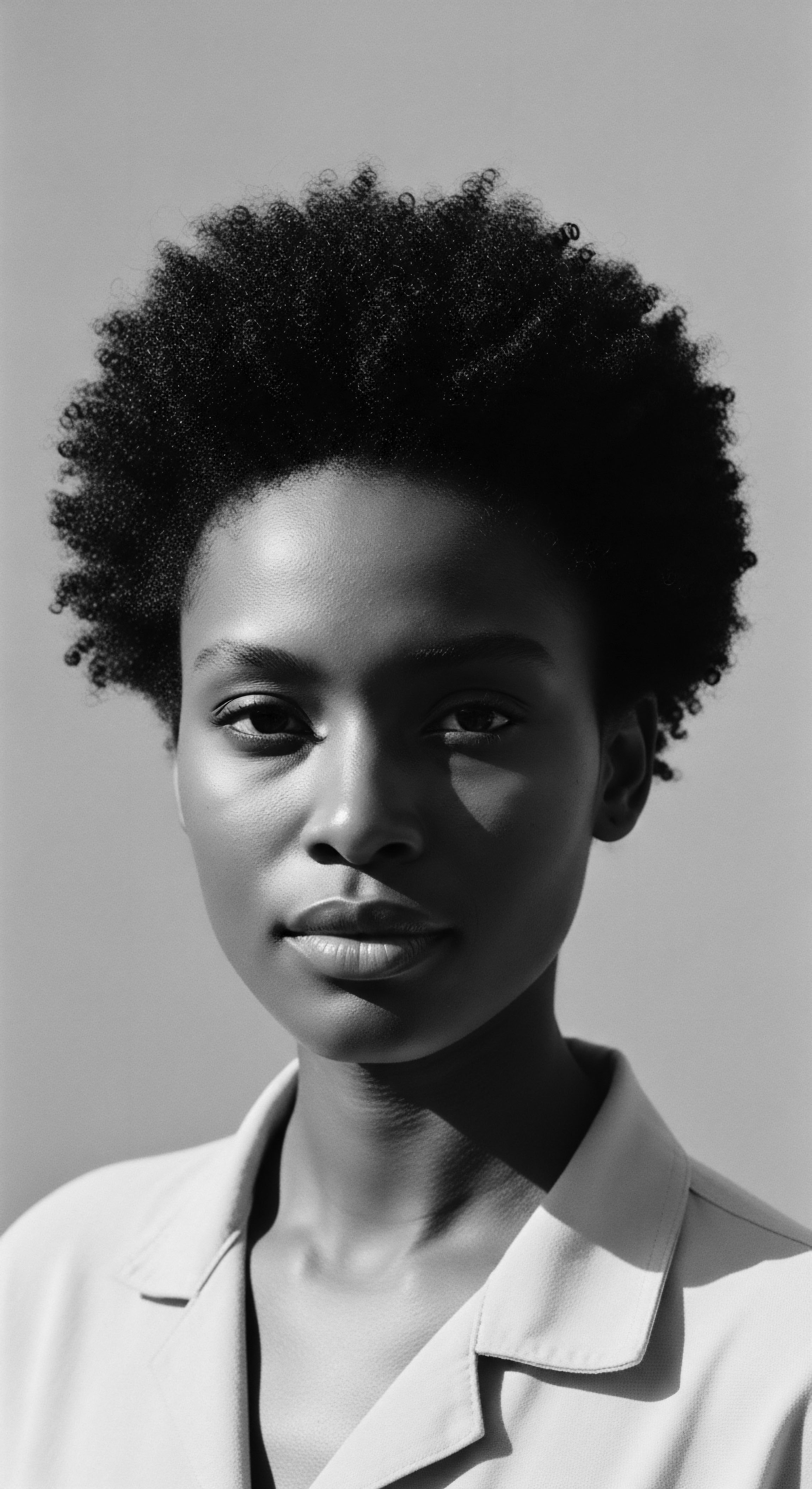
Reflection
As we trace the intricate pathways of cultural meanings embedded within textured hair styles, a singular truth emerges ❉ each coil, each braid, each twist is a testament to the enduring spirit of a people. It is a living legacy , continually shaped by history, acts of self-determination, and the quiet dignity of daily care. The ‘Soul of a Strand’ ethos, which guides this exploration, speaks to more than just the physical attributes of hair; it speaks to its profound capacity to hold memory, communicate identity, and connect us to an unbroken chain of ancestral wisdom .
The story of textured hair is one of remarkable adaptability and persistent beauty, flourishing against odds, transforming imposed limitations into powerful expressions of self. From the ancient African kingdoms where hair was a nuanced language of status and spirit, to the harrowing passages of forced migration where it became a clandestine map to freedom, and through periods of resistance against oppressive laws, textured hair has stood as a beacon. Its journey through the diaspora is a testament to unwavering creativity and deep-seated pride. It remains a vital force in contemporary identity, a source of personal empowerment, and a visible thread connecting individuals to the collective heritage of Black and mixed-race communities worldwide.
This enduring journey, from elemental biology to profound cultural meaning, invites us to look upon textured hair not merely as a biological trait, but as a dynamic archive. It is a repository of stories, a canvas for self-expression, and a powerful emblem of historical continuity. To understand textured hair is to understand a significant chapter of human resilience, cultural richness, and the unyielding pursuit of self-definition.

References
- Byrd, A. and Tharps, L. (2001) Hair Story ❉ Untangling the Roots of Black Hair in America. St. Martin’s Press, New York.
- Munu, A.J. (2021) Allah, Asè and Afros. Critical Muslim.
- New York Historical. (2024) Fashionable Rebellion. Women & the American Story.
- Odele Beauty. (2024) A History Lesson On Hair Braiding.
- Reframe52. (2024) Tignon Laws & Black Women’s Creative Resistance.
- Rovang, D. (2024) Ancient Gems ❉ A Historical Survey of African Beauty Techniques. Obscure Histories.
- Expedition Subsahara. (2024) Braids ❉ A Brief Cultural History.
- BLAM UK CIC. (2022) The history of Black Hair.
- ELLE. (2020) A Brief History Of Black Hair Rituals.
- Library of Congress. (2024) Heavy is the Head ❉ Evolution of African Hair in America from the 17th c. to the 20th c.
- Genesis Career College. (2024) History of Braids ❉ More Than Just a Hairstyle.
- Khumbula. (2024) A Crowning Glory ❉ Hair as History, Identity, and Ritual.
